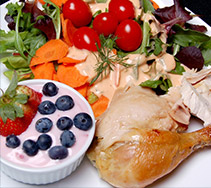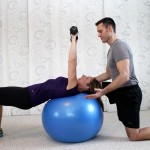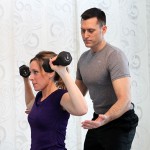As a professional personal trainer who has been in the health/fitness world for over 15 years, I’ve seen magical supplements come and go. Supplement producers and distributors claim that their product is the best and that everyone in the world needs it in order to live longer, be stronger, improve one’s health, and improve your sex life. I learned in my college nurtrition courses that if you consume a well-balanced diet with plenty of fruits and vegtables, lean protein, and complex carbohydrates that you do not need to supplement your diet with multi-vitamins, protein powders, or energy drinks. However, over these past 15 years, I quickly found out that very few people have a perfect diet that provides adequate amounts of all vitamins and minerals required for optimal health. Now, I am not a supplement salesman, however I do encourage my clients to consume a few supplements that may help to improve their health when combined with proper eating habits, a balanced diet, and plenty of exercise.
The following 5 supplements are recommended for men and women by health professsionals around the world. I do not give any brand names because, again, I am not a supplement salesman. Also, you will find research out there that does not support the consumption of these supplements due to lack of evidence in improving health. However, you will find research that does support the consumption of these supplements with plenty of evidence that shows improvements in health. If you are interested in taking any supplements, always look to your doctor for guidance. A doctor may be able to offer more information and recommend the best brands in this multi-billion dollar industry. Remember, these are the top 5 for men and women. There certainly are other important specific supplements such as calcium, iron, and boron. However, these are more gender specific supplements. I will discuss the importance of these in future blogs.
For men and women:
• Multivitamin – A daily multivitamin taken with a meal may benefit most peoople. Multivitamins vary when it comes to nutrient contents. So choose one that offers the nutrients you need most. For example, if you have a family history of eye disease, you may want to choose a multivitamin with lutein or if prostate cancer is a concern, choose a multivitamin with boron.
• Fish Oil – Omega-3 fatty acids found in fish oil may help to fight against heart disease. Omega-3s are linked to higher levels of HDL cholesterol (that’s the good one), improved metabolism, and better nutrient absorption. Be sure to choose high-quality supplements with high levels of DHA and EPA.
• Vitamin D3 – Sufficient levels of vitamin D are essential for maintaining good health. Low vitamin D has been linked to several types of cancer, weight gain, depression, poor nutrient absorption, and low bone density. Vitamin D3 is the most bioavailable form (most readily available for absorption in the body). The sun’s rays, when absorbed by the skin, convert to D3 in the body; however most Americans do not get enough sun year round.
• Coenzyme Q10 – CoQ10 is known as an anti-inflammatory. Inflammation is often related to weight gain, arthritis, headaches, and heart disease. Daily doses of 100 mcg of CoQ10 have been shown to improve many of these conditions. To be better digested, be sure to choose a soft gel over the powder capsule.
• Folic Acid (Folate) – Most people are familiar with the importance of folate for women during pregnancy to decrease the risk of children born with disorders of the brain and spinal cord. However, folate has a number of health benefits for men and women of all ages. Folate is an essential B-vitamin that has been proven to lower the risk of Alzheimer’s disease. Folic acid may also improve arterial blood flow which helps to lower the risk of hypertension and heart disease.






